Prehistory to Post History
- mcohe7
- Sep 23
- 4 min read

The Basque region is full of caves with prehistoric drawings. The cave at Altamira is probably one of the most famous. The people who lived during the Paleolithic period near the coast had a varied and healthy diet, created sophisticated tools from bones and antlers, and lived in cohesive groups.
The actual cave is not open to visitors so a “neocave” shows us how people from 35,000 to 13,000 BCE may have lived. The building you see what constructed next to the cave as a headquarters for exploration and now is used for research and meetings. The museum and “neocave” are open to the public.
As you walk through the simulated cave you can see the drawings and paintings on the walls and on the ceiling above you. Altamira is the first place where Paleolithic rock art was found in 1879 which as you might imagine had a profound impact on how early people were thought of. If you are in Ancient Art History we have already looked at prehistoric art and we’ll never really know what the meaning is behind the art though it’s safe to say the artists were quite adept at rendering their environment.
This display in the museum shows where other cave art can be found so it can be found worldwide. We have learned about a number of these works in the middle display and the display next to this one was of the “Lion Human” that many of you chose to analyze.

Not far from the Altamira cave is a 19th century building that is one of the earliest works of Antoni Gaudi and was a private home. It’s the opposite of the simple cave paintings though no less magical.
Antoni Gaudi (on the left) was an architect whose work was a precursor of modernism. His masterpieces of architecture are connected to his inspirations from nature. The structure as well as its decorations pay homage to the forest, the garden, the sea, and the sky. The house was designed and built for Maximo Diaz de Quijano a Spanish member of the bourgeoisie who emigrated to America to seek his fortune. He worked as a lawyer in Cuba and then returned to Spain where he could cultivate his interests in music, botany, and writing.
The house is located in what had been a fishing village that transformed itself into a modern spa town that included some of the foremost modernist architects of the day.
Gaudi was known as the nature architect with details over every inch of this structure.
In the center of the house is a conservatory that brings in the sun, retains heat, and distributes it throughout the house. One can see the garden from almost every room and upstairs the vaulted room improved acoustics and windows fill every wall.
Gaudi also designed furniture and you can see the sunflower tiles that adorn the outside of the building. He also designed various latches and knobs for cabinets and windows as well.

Back in Barcelona Casa Batlo was another one of Gaudi’s early projects a redesign of an already existing building from the late 1800s in 1904. It feels as though it captures nature just as El Capricho does though right in the center of a busy city. It has unusual tracery, irregular oval windows and flowing stonework. Even the staircases feel like they are flowing.
There are few straight lines unusual wood carvings and metal work and of course mosaics. The central skylight brings light into every corner of the house.
Light and color are everywhere in the house. The roof has Gaudi’s signature smoke stacks and the roof is arched and decorated with a colorful mosaic made of broken tiles. The whole roof structure has been likened to a dragon or dinosaur.

Coco Fusco is a Cuban American artist having an exhibition at the Contemporary Art Museum in Barcelona. The show is titled “I Learned to Swim on Dry Land.” It’s the first sentence of the story Natacion (Swimming) by the Cuban writer Virgilio Pinera in 1957. Coco Fusco has been a key figure in activist video art and performance since the 1980s. When she is in Cuba she is missing her home in the US and when she is in the US she pines for her native land. Two works caught my attention. “The Empty Square” from 2012 and one I was familiar with “The Undiscovered Amerindians Tour” from 1992-94.
The empty plaza is Havana’s Plaza de la Revolucion. In the wake of the 2011 Arab Spring protest Fusco questions why this square is mostly empty? Many important events in Cuban history happened here and now it’s just a large hot empty space with tourists taking photographs. That’s her in the red dress walking back and forth and the images on the buildings are Che Guevara (on the left) and Karl Marx (on the right). The images are shown lit up at night in the video.
The “Couple in the Cage: Two Undiscovered Amerindians Visit the West” Fusco and another artist Nao Bustamante created fictional characters from a fictional island called Guatinau. They traveled throughout the US and to Australia where the public could view them living in a cage engaging in bizarre activities that many people who saw them believed were real. It confirmed the persistence of colonial fantasies in contemporary culture and even more so how people believed what they are told no matter how absurd.


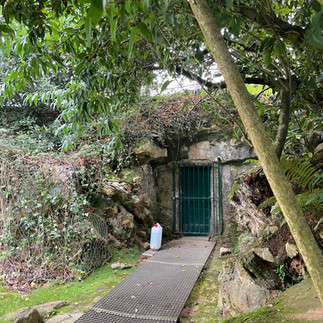




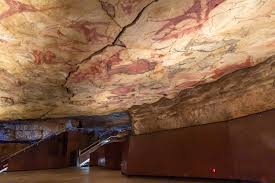

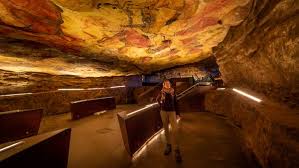
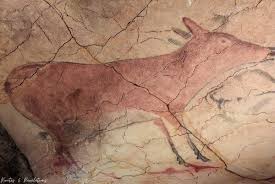












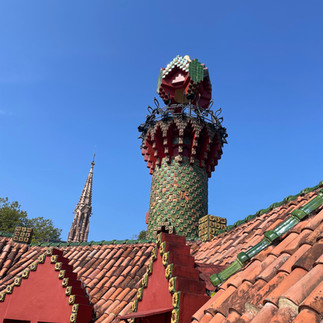









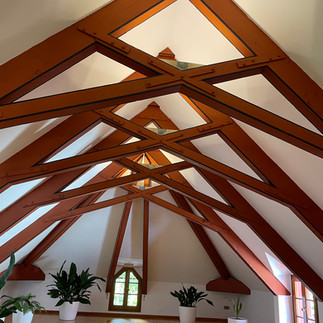








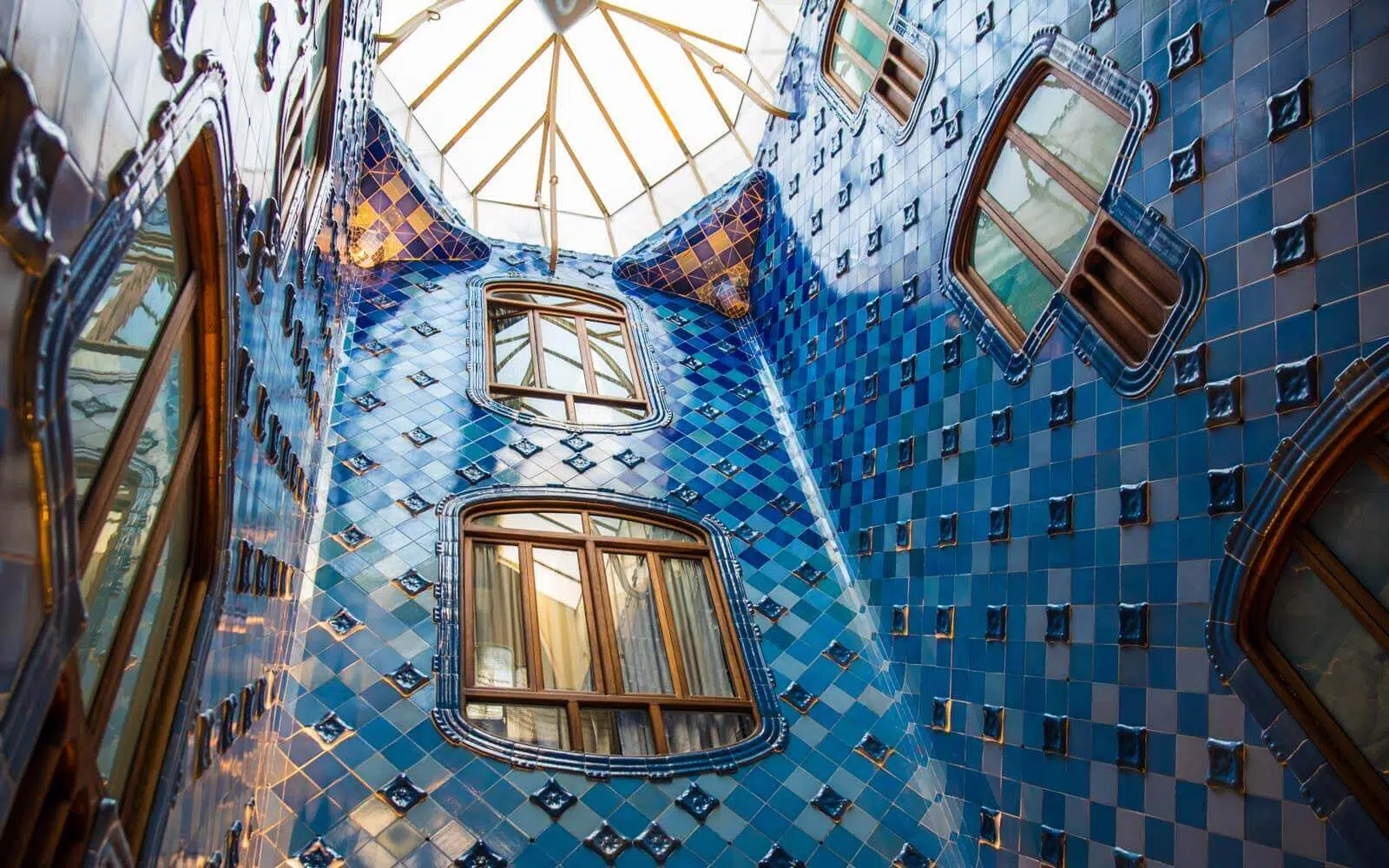
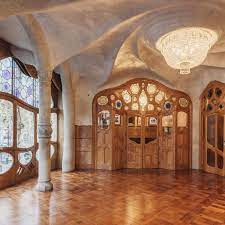









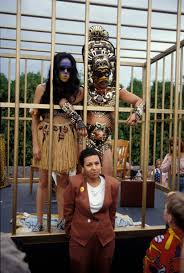
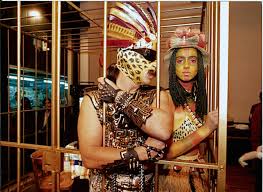
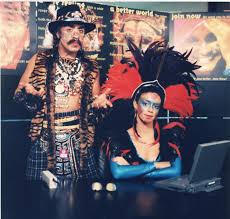



Comments